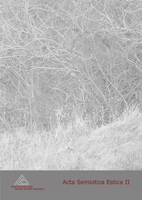Sissejuhatus antropoloogilisse zoosemiootikasse. Inimeste ja teiste loomade vahelise suhte semiootiline käsitlus
Introducing Anthropological Zoosemiotics. A Semiotic Approach to the Human-Other Animal Relationship
Author(s): Dario MartinelliSubject(s): Semiotics / Semiology
Published by: Eesti Semiootika Selts
Keywords: zoosemiotics; anthropocentrism; human-animal relationship; signification; zoosemiootika; antropotsentrism; inimese-looma suhe; tähistamine
Summary/Abstract: Zoosemiotics is more than forty years old. It was 1963, when Thomas Sebeok established its birth and, partly, definition. As most persons in their forties, zoosemiotics, too, seems to be driven by a desire to reflect about its life, identity and experiences. Most of the competencies so far collected on non human animals have been specialistic, punctual, 'microscopic', and thus not so open and interdisciplinary. Looking carefully, the discussion on non-human animals, in terms of philosophical questions (i.e., macroscopic issues), is much more indefinite and incomplete. We feel now an urge to doubt, when discussing about other animals. We feel the urge to define and refine them, as concepts, and as subject in relation to us. In fact, who is 'us'? Most of our identity, as humans, is constructed through the relation with other animals. This relation, most definitely, is of semiotic type, and therefore must be considered as part of the zoosemiotic study. It is about communication and signification, understanding and misunderstanding, interaction and representation. Aim of the present article is to introduce a novel (although largely anticipated by Sebeok himself) and important branch in its domain: anthropological zoosemiotics, i.e., the study of the semiotic relationship between humans and other animals.
Journal: Acta Semiotica Estica
- Issue Year: 2005
- Issue No: 2
- Page Range: 135-252
- Page Count: 18
- Language: Estonian

